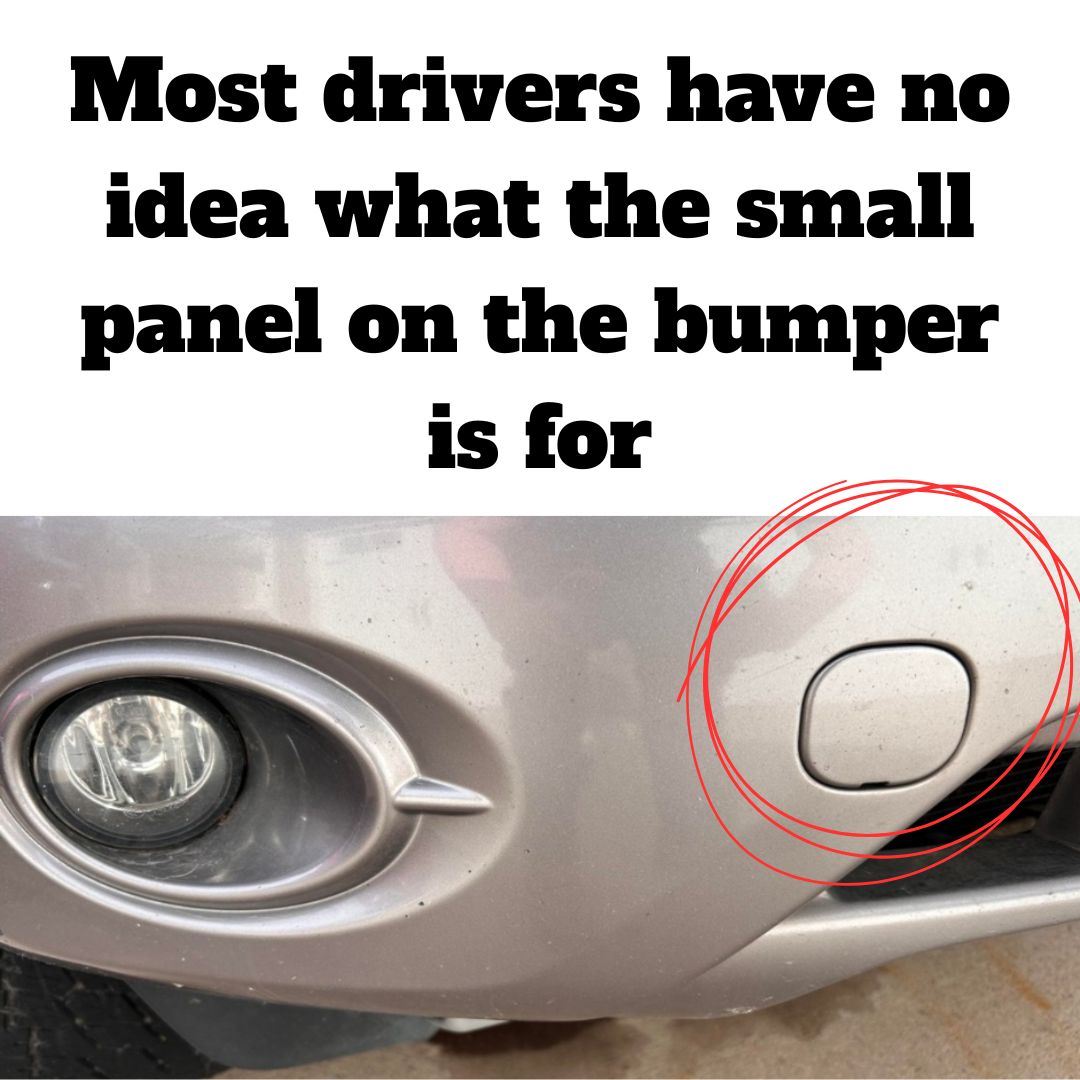Let’s be honest—most of us never give that tiny square or rectangular flap on our car’s front bumper a second thought. It’s just there, quietly blending in like a forgotten design feature. But surprise—this little flap isn’t just for looks. It serves a real and important purpose, and once you learn what it actually does, you’ll never look at your bumper the same way again. So buckle up (yes, that pun is intentional), because we’re about to reveal the hidden function of that unassuming little panel and why it could seriously come in handy when you least expect it.

That small square or rectangular panel is known as a tow hook cover. Yep, that’s right. It’s not a fancy camera or some kind of secret tech—it’s a disguised access point for a tow hook or towing eye. Underneath that cover lies a threaded hole, and it’s where you can screw in a tow hook when your vehicle needs to be towed. Pretty cool, huh? It’s like your car’s got a hidden superpower just waiting to be activated.
Here’s how it works. Behind the panel is a socket that’s designed to hold a detachable tow hook—usually stored in your trunk, often with the spare tire kit. If your car ever ends up stuck in the snow, sand, or mud—or even if it just breaks down with a flat tire or a dead battery—you can pop off the cover, twist in the hook, and allow a tow truck to pull your car to safety. This clever setup protects your bumper and other fragile components from damage that could occur if the car were to be pulled from the wrong spot.
You might be wondering, “Why don’t all cars just have exposed tow hooks?” Great question. Trucks and off-road vehicles often do, and they’re usually pretty rugged-looking. But passenger cars are designed with aesthetics in mind—clean lines and sleek profiles. That’s why modern carmakers opt for hidden tow hook sockets. The function is still there, but it’s tucked away behind a small panel to keep your car looking sharp.
So, when might you actually need to use this hidden feature? Imagine being stranded on a snowy mountain road, axle damaged from a deep pothole, or tires sunk deep into a muddy ditch. These are the exact kinds of situations where you want your car to be towed the right way—not with a chain hooked onto your bumper like some amateur rescue mission. The tow hook gives roadside assistance a secure, designated point to pull your car without adding more problems.
Besides emergencies, tow hooks are also commonly used on racetracks. If you’ve ever seen a car with a neon pink or red hook sticking out, that’s no accident—it’s intentional. On tracks, vehicles must be removed quickly and safely if they crash or stall, and tow hooks make that possible. In fact, many motorsports require tow hooks for this very reason. And guess where they usually screw in? That same little panel we’re talking about.
Now, if you’re ever in need of using it, here’s what to do. First, locate the tow hook—usually in your car’s toolkit or spare tire compartment. It’s a heavy-duty metal hook with threads on one end. Then, use a strong fingernail, car key, or flathead screwdriver to gently pry off the panel. Be careful not to damage it. Once it’s off, insert the hook into the exposed hole and turn it clockwise until it’s snug. Then, attach the tow strap and let the pros take over. One quick tip: if possible, always put your car in neutral before it’s towed. And never let someone pull your vehicle using parts that weren’t meant for towing—like suspension arms or random undercarriage parts.
Wondering what to search for if you want to learn more? Try terms like “tow hook cover,” “towing eye cover,” or “recovery point panel.” Those will lead you to the right information, even if “small bumper flap thingy” doesn’t bring up helpful results.
And yes, these aren’t just found on front bumpers. Many cars have them on the back as well. Whether your car has both front and rear tow hook sockets depends on the make and model. Some cars only have them in the front, others only in the rear, and some—typically higher-end models—have both.
Because these covers are small and not particularly tough, they can fall off or get lost—especially after minor accidents or repair work. If yours is missing, don’t worry. Replacements are easy to find online or through a dealership, often color-matched to your vehicle. Just snap a new one into place, and you’re good to go.
In the end, this tiny, overlooked piece of plastic has a pretty important job. It might not look like much, but it’s a key part of your car’s emergency toolkit. It’s like the secret escape hatch in a movie—hidden in plain sight, waiting for its moment to shine. Now that you know what it is, you’ll start seeing it on every car you pass. And the next time someone asks, “Hey, what’s that flap for?” you’ll have the answer ready—and it might just make you the smartest driver in the lot.




